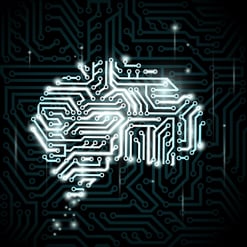For years now Artificial Intelligence, like IBM Watson, has impacted countless aspects our daily work and personal lives and over the next few years, analysts believe that will grow exponentially. The analytic firm Tractica is predicting that the annual global AI software revenue will skyrocket from $644 million in 2016 to $39 billion by 2025. With financial growth, comes innovation of new and improved technologies. The surge in AI use is predicted to be focused in some key areas that include:
- Machine Learning
- Machine Reasoning
- Natural Language
- Strong AI
- Computer Vision
These key areas span many different industries and can create massive benefits for individuals as well as businesses. With all the potential growth, we decided to look at 10 areas that could gain big innovation from the continued growth of the AI technology and its products. In part one of this blog post, we look at the impact in the transportation industry, image analysis, and the medical field:
Autonomous Vehicles
Over the past several years, autonomous vehicles have been hailed as the next phase in transportation technology. With the continued rise in electric vehicles, the integration of autonomous nature becomes easier and easier. The use of autonomous forklifts, drones, and other robot warehouse workers are already helping e-commerce companies thrive. As more vehicles are equipped with sensors to calculate distance, routes to destinations, spatial calculation between vehicles, identifying potential hazards (pedestrians, poor road conditions, other vehicles), and other integrations we should see an increase in the innovation of the self-driving vehicle.
Removing the human element can make vehicles/transportation much safer and efficient. AI-enabled machines and vehicles don't cause accidents by texting or using a phone, they don't fall asleep while performing, they can communicate with other autonomous vehicles for efficiency, and they don't need to take brakes. An autonomous vehicle could even prioritize driving into a ditch instead of hitting a pedestrian to reduce the loss of life and insurance costs.
Mapping and Localization
Autonomous Vehicles need up-to-the-minute road details and condition updates to help create a smooth driving experience. Avoiding vehicle collisions is the number one concern when it comes to self-driving vehicles; this is solved with simultaneous localization and mapping. Artificial Intelligence will help guide autonomous vehicles to the intended destination by helping avoid traffic, vehicles, buildings, and other obstructions.
Autonomous vehicles and drones that are governed by AI can use this mapping and localization to play a role in tracking trends in location-related business data as well. For example, it could track the locations of customers based on certain products or identify regions where your product has the ideal demographic. This data can be used to help marketing, customer service, and product value.
Visual Recognition and Tagging
Healthcare, policing, media print, and film and television are all industries where Artificial Intelligence can provide companies with the ability to process large volumes of images and photographs and prepare these images for reuse and discoverability. Visual recognition functions like image classification could help doctors provide better patient care by allowing AI to process medical images efficiently and reducing study time of physicians.
Patient Data Processing
Processing medical images is one-way Artificial Intelligence can help the medical field; another way is mining structured and unstructured patient data. Helping categorize and compare similar cases, either in the patient's family or against other similar patient histories. Watson, for example, can help physicians diagnose patients more accurately by comparing millions of case records and suggest possible care management strategies for physicians based on similar cases.
AI is helping physicians make more accurate diagnoses and prescribe more effective medications at the same time eliminating duplicate services and unnecessary hospital visits. This leads to better care and more efficient healthcare system by reducing spending and waste. The full lifecycle of a patient can now be overseen by AI like Watson and help make treatments for long-term diseases like cancer, diabetes, and others.
Medical Image Analysis
Between X-Rays, MRIs, ultrasounds and other files, Artificial Intelligence can help identify and classify each of these different types of images. Watson's Health Imaging can even classify images by body part, tissue type and other categories that healthcare providers need to have tagged. This creates a deeper relationship between multiple file types and helps doctors to not only treat that particular patient but help treat other patients with similar symptoms. The more accessible these images are to the healthcare community the more effective the community will be.
These are just five of the leading market sectors in which Artificial Intelligence are creating innovation for both personal and business use. Next week we will take a look at the other five sectors where Artificial Intelligence is primed to grow in the next few years.
Profound.js helps you easily integrate Watson and other Artificial Intelligence into your IBM i applications by taking advantage of the resources available on the Open-Source Ecosystem and Node.js. Click here to see how you can easily get started with Profound.js.




